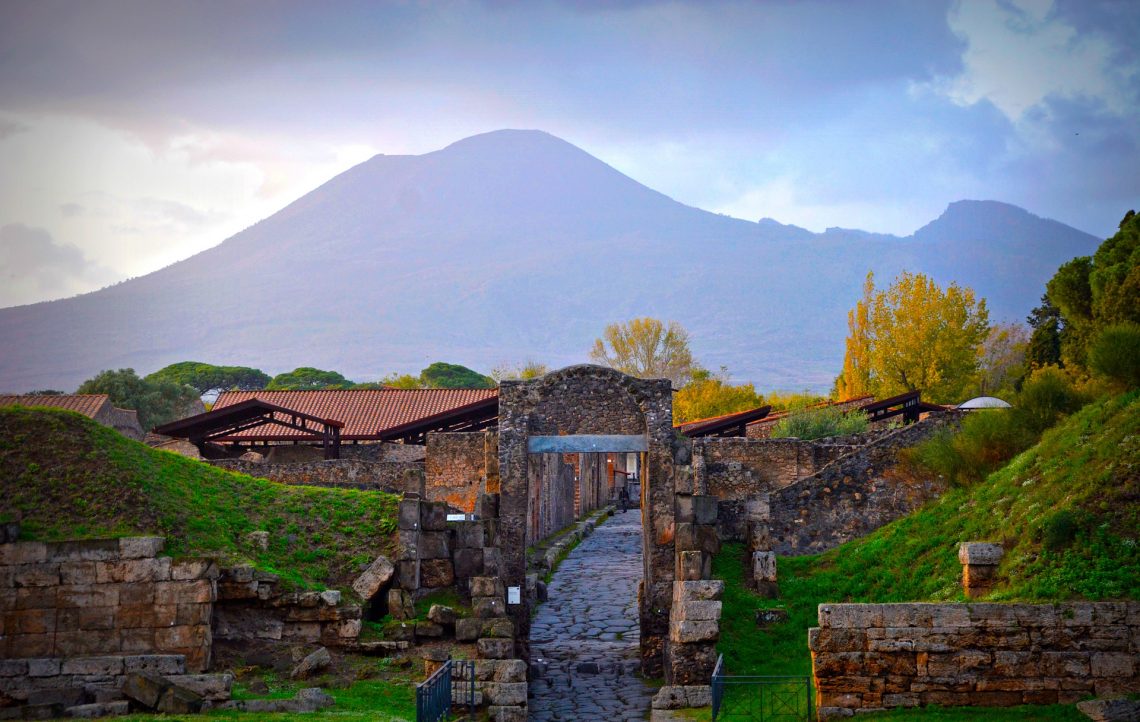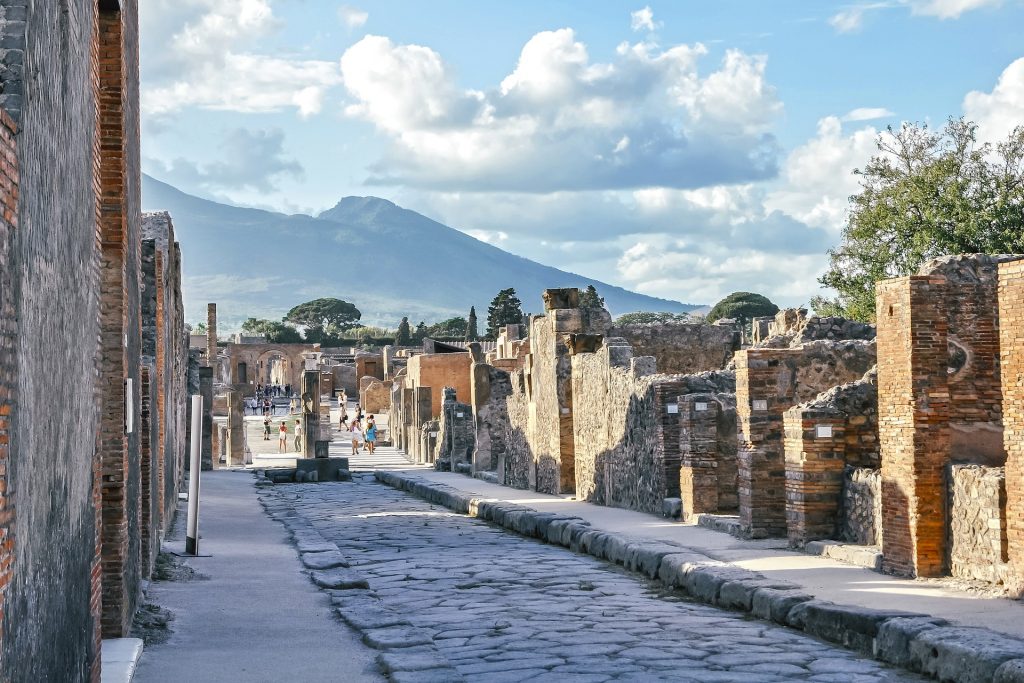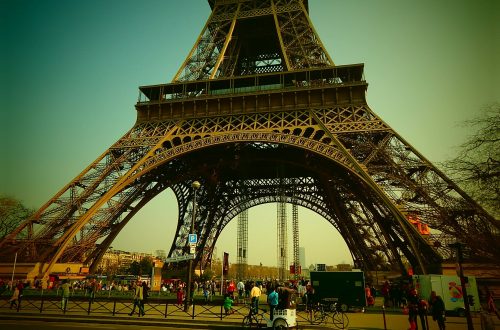
I Survived the Destruction of Pompeii, AD 79
One of the most popular historical fiction series for kids is the I Survived series by Lauren Tarshis. Tarshis travels back in time to important events in history, and tells us a fictional tale of what the event might have been like.
Characters are fictional, but the events that they live through are true. I’ve decided to go on a journey through these events, then research the events to learn more. In the book, I Survived the Destruction of Pompeii, we travel back almost two thousand years.
Quick Geography
Pompeii is a city located at the base of Mount Vesuvius in what is now Italy, just 14 miles south of Naples. In the time period in which we are talking about, Italy wasn’t Italy yet. In A.D. 79, Pompeii was in the Roman Empire.
There’s a long history of the city, but after many battles, the Roman Empire overtook the indigenous people, making the people of the city Roman citizens, and the official language changed from Oscan to Latin.
Understanding Time Periods
When talking about history, time is measured in different ways. For example, when one talks about an event as happening “B.C.”, that stands for “before Christ”. The destruction of Pompeii happened in “A.D.”, which stands for Anno Domoni, which is Latin for “year of our Lord”.
Sometimes you may hear “B.C.E.”, and that stands for “before the common era”. It means the same things as “B.C.”, but it takes religion out of it. Another way to say “A.D.” is “C.E..”, which stands for “common era”.
Here’s a cheat sheet if that sounds confusing:
| Religious | Not-Religious |
|---|---|
| B.C. (Before Christ) | B.C.E. (Before Common Era) |
| A.D. (Anno Domini) | C.E. (Common Era) |
Vesuvius
About the Volcano
Mount Vesuvius is one of the most well-known active volcanoes in the world because of its history of violent eruptions and its close proximity to Naples and other surrounding cities. Because of the location and the type of eruptions that it has, it also has been considered one of the most dangerous volcanoes.
Vesuvius is positioned on a tear in the African plate. Scientists detected the fracture and found that it allows for the heat from the manta layer in the Earth to heat up the African plate, building up pressure and resulting in violent volcanic eruptions.
An earthquake devastated the cities of Pompeii, Herculaneum, and caused some damage to Naples in A.D. 62. Buildings and temples were being rebuilt, and it was a slow process. The cities had not been fully recovered from the earthquake before the eruption of Vesuvius.
A.D. 79
Tremors had shook the town of Pompeii for years leading up to the explosive eruption that buried the city. The people who lived at the base of the volcano got used to the Earth shaking, and didn’t think anything of it when it happened. This was the first stage of the destruction of the cities surrounding it in August of A.D. 79. Note: The calendar used during the time of the eruption is the Roman calendar, meaning the eruption took place in October of the calendar that we use today.
The people around Vesuvius thought that it was just a mountain. No one was aware of the dangers that boiled right below the surface as it built up pressure. The people didn’t even have a word for “volcano” yet.
In A.D. 79, a plume of smoke rose high in the sky, eventually blocking out the sun. Ash fell, burying buildings and falling on people who were trying to escape. Along with ash, gas and rock fell down onto the people. This stage caused the most deaths because of the heat that engulfed the city.
People who were killed in this stage were burned alive, their lungs burning and their muscles collapsing, leaving the people in a curled up position that was then preserved by the fallen ash.
The last stage is the part that most people think about when they think of a volcanic eruption: the lava flowing from the volcano. The cities were buried and preserved by the ash and hardened lava (igneous rock).
There is not a specific number that has been agreed upon for the amount of deaths that Vesuvius caused in A.D. 79, however it has been decided that thousands of people died.
Most Recent Eruption
The volcano has erupted many times since the famous one in A.D. 79, some of the eruptions being smaller than others. The most recent serious eruption of Vesuvius was in 1944. This was during WWII, and the people around Vesuvius were already enduring invasions and bombings from the war.
The eruption lasted a week and a half. There were 26 deaths among Italian citizens and almost 12,000 were displaced.

After the Disaster
The city of Pompeii was buried by Mount Vesuvius in A.D. 79, but was not rediscovered until scientists found it in 1748.
The city had been perfectly frozen in time, buildings were covered in ash and sealed for almost two thousand years. Archaeologists were able to uncover remains of people who had died from the now-famous eruption, in the position that they died in.
Because the remains were untouched for millennia, scientists have been able to discover how the people lived and what life looked like all those years ago. A lot of the initial focus was on uncovering major buildings and houses of the wealthier people from the city, but now scientists are looking into how the rest of the people of Pompeii lived. Artifacts are still being dug up today.
A section of the city still remains buried below the hardened ash, and the main challenge for scientists now is to preserve what has already been uncovered. The city was sealed off for thousands of years, and since people have started digging it out, what is left of the city has been exposed to tourists and weather. This causes some issues with preserving what the ash had for all of those years.
Other Topics
Slavery
Slavery has made an appearance many times throughout our history books, but one area that I don’t remember reading about it was in Pompeii before the eruption of Mount Vesuvius.
Slaves were brought to the Roman Empire from many places, including Greece, Africa, and even bred for slavery. Households may have had five or more slaves–depending on the size of the house.
They were seen as property, and if a slave was hurt or killed by anyone else, the perpetrators had to pay the slave owner for damages. Slaves who escaped were hunted down and punished.
Multiple people who have been excavated from the remains of the disaster had shackles on their ankles or wrists, meaning they were slaves.
Gladiators
A big form of entertainment in A.D. 79 were the Roman Games. Gladiators were mostly slaves, bought for their strength and trained to battle for spectacle. Although most of the gladiators were slaves, some were freedmen and some were born free.
The well-known fighters with one name were most likely slaves as slaves were only given one name. Gladiators with multiple names were most likely freedmen or they signed up to be a fighter for money.
The history of gladiators is a long one, as it started with the belief that souls were transported by human blood, then ended up with a form of entertainment. The gladiators who fought typically fought to the death, though not all losses resulted in death.
Religion
Religion in ancient Rome was similar to the Greek’s. People worshiped many gods, building multiple shrines for them. With the eruption of Mount Vesuvius preserving the ancient towns of Pompeii and Herculaneum, researchers have been able to uncover and learn what the people believed two thousand years ago.
Some of the shrines that have been uncovered include Minerva (goddess of the arts and of war), Apollo (god of music and medicine), Juno (goddess of love and marriage), Venus (goddess of love, desire, prosperity and fertility), and Jupiter (god of the sky and thunder).
Here are the Greek comparissons:
| Roman God | Greek God |
|---|---|
| Jupiter | Zeus |
| Minerva | Athena |
| Apollo | Apollo |
| Juno | Hera |
| Venus | Aphrodite |
Because the people of Pompeii were unaware that Vesuvius was an active volcano, a lot of them thought the eruption was caused by the gods, or that it was the end of the world.
Learn More
There have been hundreds of earthquakes surrounding the volcano since the last destructive eruption, the worst one being 3.6 magnitude and was felt all the way in Naples in October of 1999. This quake was the same magnitude as the one that took place 17 years before the big eruption in 1631.
Scientists have agreed that Mount Vesuvius is due for another eruption soon. Because of modern technologies tracking the volcano, people are still living happily beside it. When scientists decide that it’s time, the surrounding areas will be evacuated.
As always, I like to include my extra sources for you to read if you would like to know more: more about types of volcanoes and their eruptions, more about the history of Pompeii, and more about gladiators. Happy learning!





